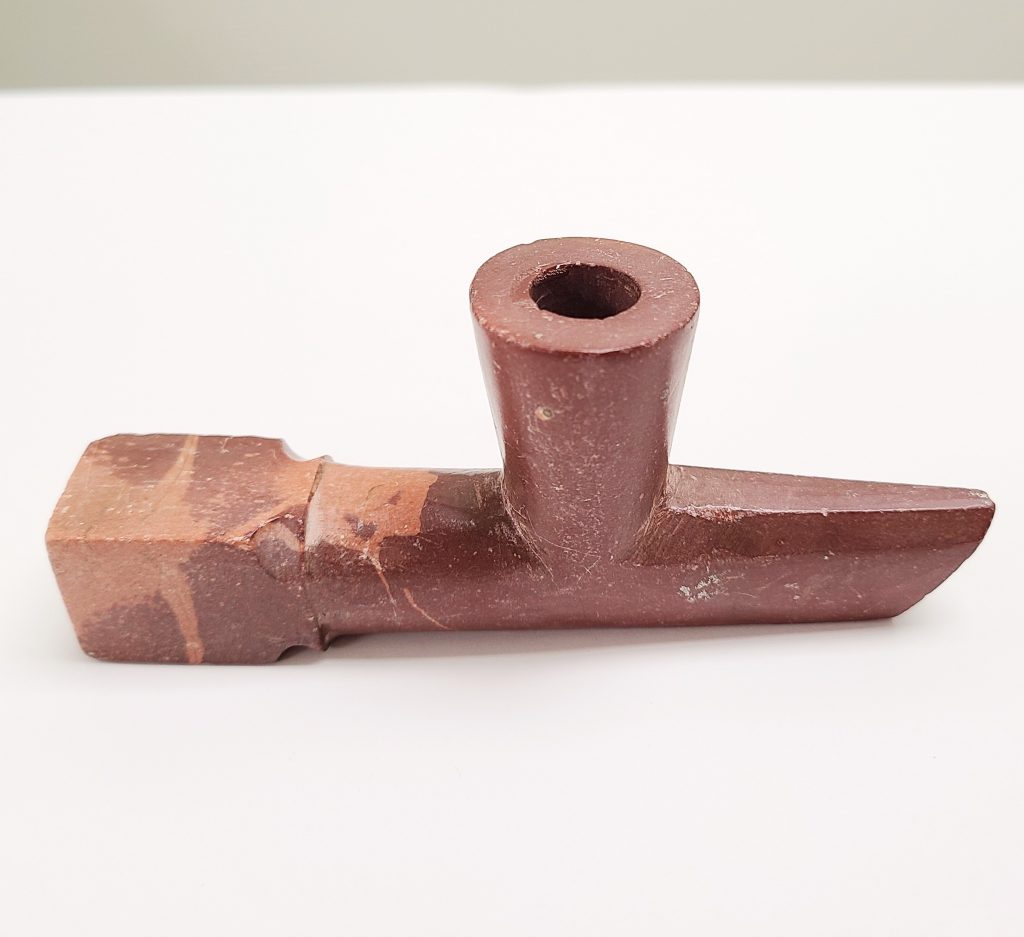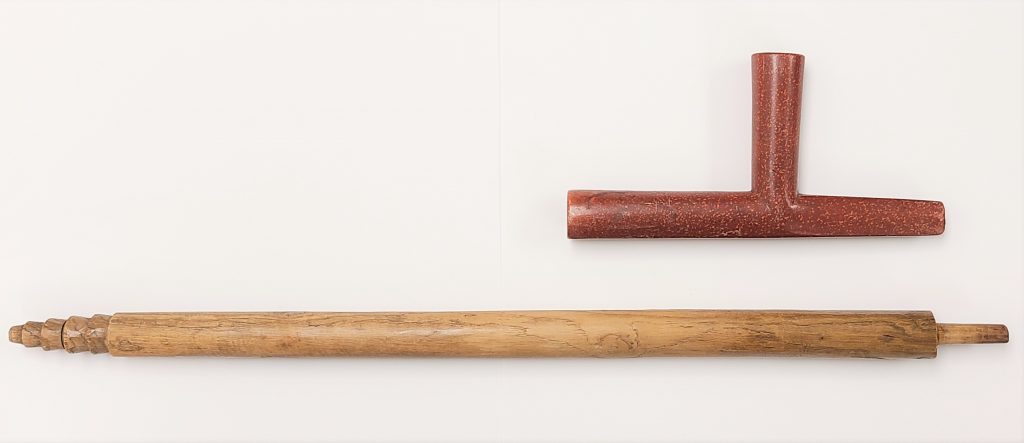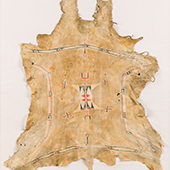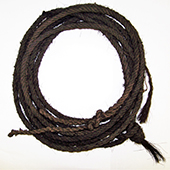Pipes


Pipes
Plains
19th century
1980.E.84 & 1980.E.82
The ceremonial smoking of tobacco in this type of pipe, known as a calumet, was a part of formal greetings and a precursor to many rituals for Plains nations. It served as a valuable tool in building relationships between people and with the spirit world. Owners considered the pipes to be extremely important possessions, and they were carried in special skin bags with the bowl separated from the stem. Joining the pieces consecrated the pipe and activated its spiritual powers. Pipes were also given to visitors as tokens of goodwill. The complete pipe shown here is rumored to have been a gift from Lakota Chief Sitting Bull to a man named H. A. Lemly.
Wooden pipe stems were usually made from green ash because the soft pith in the center could be bored more easily with a hot poker. The stems were often carved with spiral or animal forms and decorated with feathers or hide wrappings. The mouthpiece of this stem is carved to represent a rattlesnake’s rattles.
The most widely used stone for pipe bowls was a reddish soapstone known as catlinite, named for artist George Catlin, who first described its use to other European Americans in 1836. It is an ideal material because it does not crack with heat, but it is also soft enough to shape with hand tools. Catlinite is found in only a few locations in Minnesota and Wisconsin. Although the area was controlled by the Sioux during the Historic Period, the quarries were considered neutral ground open to other nations whose members would make pilgrimages to collect the stone. Today, only American Indians are allowed to dig or sell catlinite.
The pipe bowls were often carved with a human or animal face looking back at the smoker or a selection of smaller animals. Many locally distinct carving traditions developed across the Plains. These two pipe bowls are very simple examples.
Explore the other sections of this exhibit below



